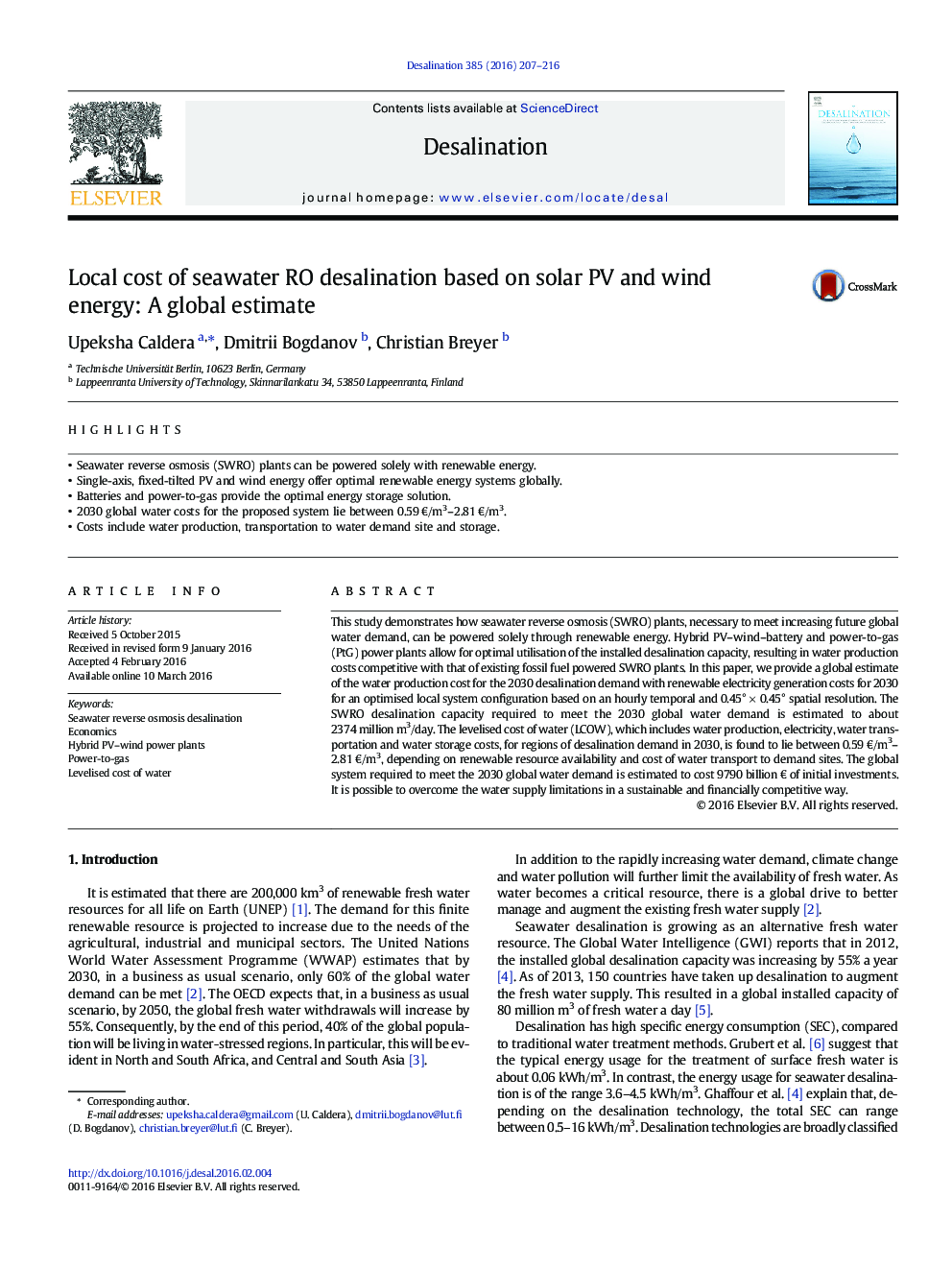| Article ID | Journal | Published Year | Pages | File Type |
|---|---|---|---|---|
| 622909 | Desalination | 2016 | 10 Pages |
•Seawater reverse osmosis (SWRO) plants can be powered solely with renewable energy.•Single-axis, fixed-tilted PV and wind energy offer optimal renewable energy systems globally.•Batteries and power-to-gas provide the optimal energy storage solution.•2030 global water costs for the proposed system lie between 0.59 €/m3–2.81 €/m3.•Costs include water production, transportation to water demand site and storage.
This study demonstrates how seawater reverse osmosis (SWRO) plants, necessary to meet increasing future global water demand, can be powered solely through renewable energy. Hybrid PV–wind–battery and power-to-gas (PtG) power plants allow for optimal utilisation of the installed desalination capacity, resulting in water production costs competitive with that of existing fossil fuel powered SWRO plants. In this paper, we provide a global estimate of the water production cost for the 2030 desalination demand with renewable electricity generation costs for 2030 for an optimised local system configuration based on an hourly temporal and 0.45° × 0.45° spatial resolution. The SWRO desalination capacity required to meet the 2030 global water demand is estimated to about 2374 million m3/day. The levelised cost of water (LCOW), which includes water production, electricity, water transportation and water storage costs, for regions of desalination demand in 2030, is found to lie between 0.59 €/m3–2.81 €/m3, depending on renewable resource availability and cost of water transport to demand sites. The global system required to meet the 2030 global water demand is estimated to cost 9790 billion € of initial investments. It is possible to overcome the water supply limitations in a sustainable and financially competitive way.
